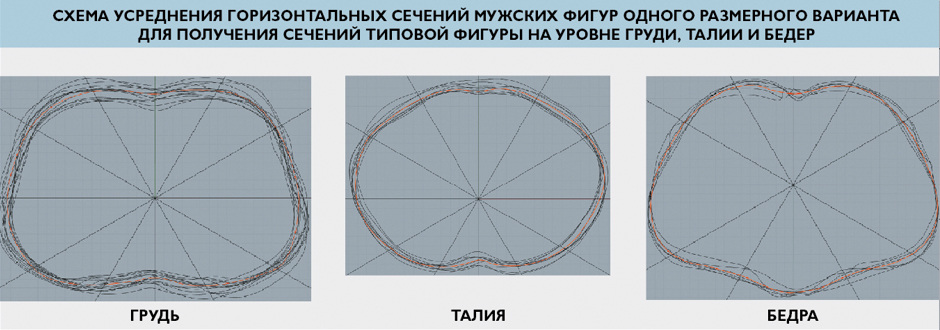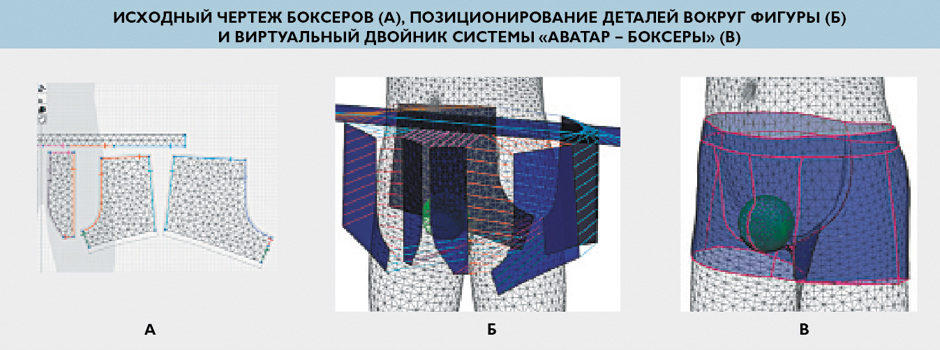Digital technologies in fashion design: expectations VS reality
Obviously, in connection with digitalization, a transition to other types of data is necessary: the anthropometric database should include horizontal sections at the main anthropometric levels and vertical dimensions, types of figures in front, side and back. Horizontal sections of male figures of the same size variant can be easily averaged and in the future will become the main frame of the digital double (see figure).

It is necessary to expand the range of dimensional features to increase the comfort of clothing, primarily tight-fitting, compression, corrective and sports. Is it possible to design high-quality men's underwear, knowing only the girths of the waist, hips and hips? Is it possible to design high-quality sportswear if we do not know the magnitude of dynamic increments or reductions to dimensional features in different poses? The questions are rhetorical with an unambiguous answer: of course not.
Now digital doubles of figures allow you to get information and simulate situations that are not always appropriate for real people. Designing individual types of underwear and clothes with a push-up effect is impossible without an anthropometric description of the so-called intimate parts of the figures. The figure shows an example of the virtual design of men's sports boxers for the correction of figure plasticity in front and back, developed at our department.

While there is not a sufficient database of digital doubles of standard figures in Russia, and, unfortunately, no one is engaged in its creation, it is premature to talk about a high degree of readiness of virtual design.
A promising direction in the creation of digital doubles of figures is to endow them with the following functions: dynamic variability with the identification of deformation of soft tissues and skin; sensory perception of pressure, friction and other manifestations of the effect of clothing on figures. Most likely, the development of digital doubles of figures will occur according to the scheme below:
- typical, solid-state, static (already developed);
- typical, solid-state, dynamic (already developed);
- typical, soft-bodied, deformable, static;
- typical, soft-bodied, deformable, dynamic;
- individual, soft-bodied, deformable:
- with sensory reactions;
- with elements of intelligence.
The creation of each new digital double should be based on training and control samples, neural networks, specially designed experiments, the use of special equipment, the study of compression of soft tissues of figures.And after processing the arrays of information, the formalized dependencies obtained can serve as the basis for modeling the transformation of solid-state avatars into soft-bodied ones, depending on the full group, the structure of the figure (water content, fat, etc.). So, already now, when designing digital mannequins, the degree of development of muscles and fat is modeled.lies, types of morphology of figures.
The transition from a static avatar to a dynamic one requires knowledge about the functioning of the human bone system. Digital doubles with sensory functions should respond to the irritations that clothing can cause.
Of course, the creation of the entire set of digital doubles is a prospect of the distant future.
To be continued.
< span style="font-size: 12px;">Photo: expert and from open sources